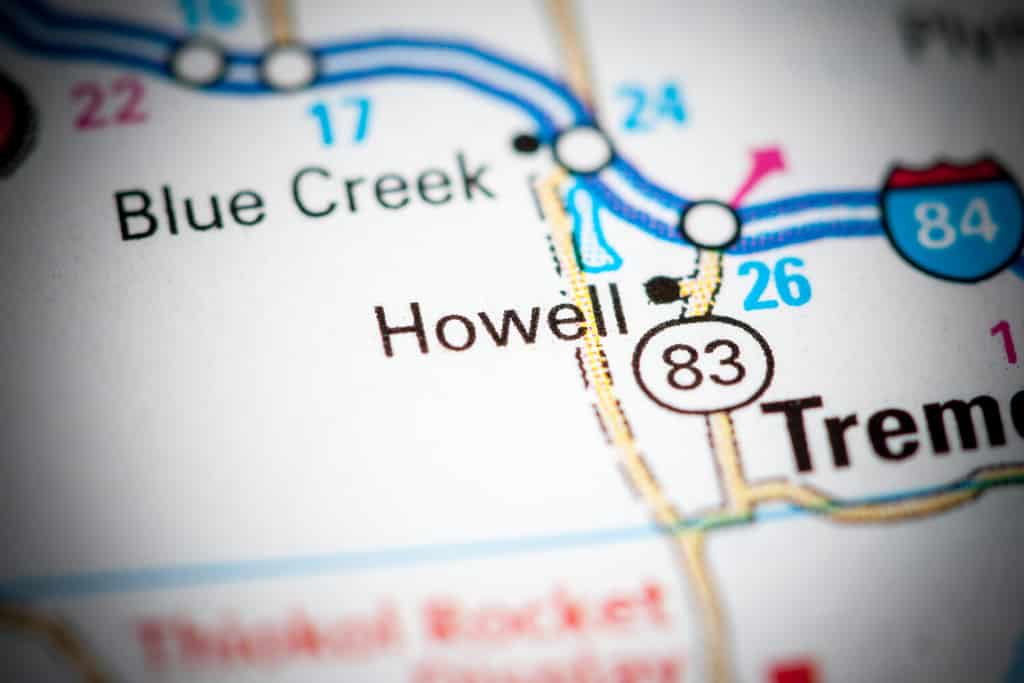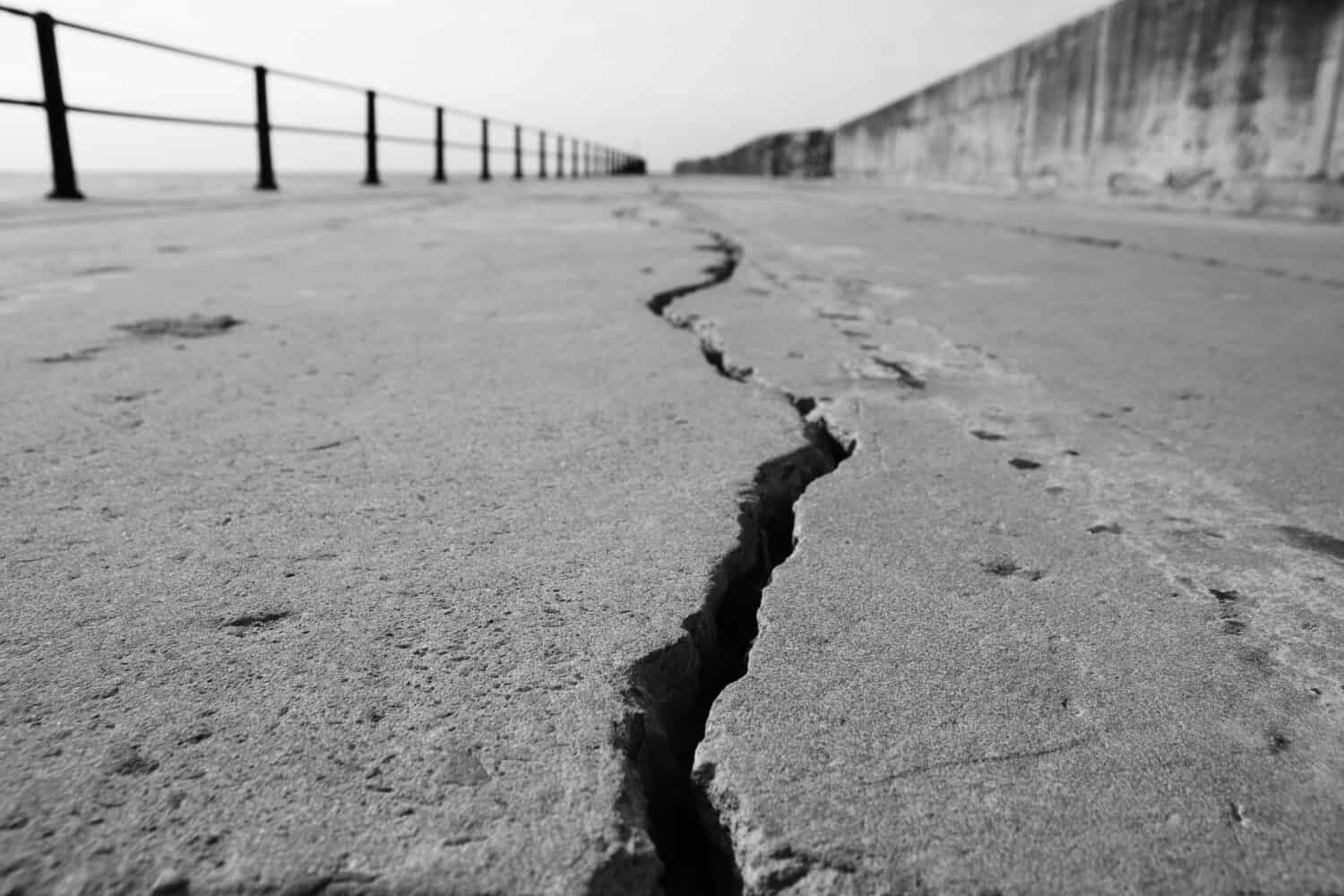Utah is located in a seismically active region, which means that it’s prone to earthquakes. The state has experienced 17 earthquakes greater than a magnitude of 5.5 since it was settled in 1847.
Utah is not on a boundary between tectonic plates, which is where most of the world’s earthquakes occur. However, it is located on the western part of the North American plate. This plate is slowly moving eastward, interacting with the Pacific plate as it travels. This interaction is what causes earthquakes in Utah.
The most active earthquake region in Utah is the Wasatch Front, which is a major fault line that runs through the state’s major population centers, including Salt Lake City, Ogden, and Provo. This region is home to the Wasatch Fault, which is capable of producing earthquakes of magnitude 7.0 or greater.
However, the town that’s at the biggest risk of an earthquake is Howell, which is a very small town with a population of 227. It has an earthquake index of 12.95. Below, we’ll explain exactly what that means.

Howell, UT, has the highest earthquake index in the state because it is located in an area with a long history of earthquakes.
©SevenMaps/Shutterstock.com
Howell’s Earthquake Index
An earthquake index is a measurement of the risk of seismic activity in the area. It’s calculated using a variety of different factors, including the history of earthquakes in the area and the nearby rocks.
Howell, UT, has the highest earthquake index in the state because it is located in an area with a long history of earthquakes. Furthermore, the area is also on top of soft sedimentary rocks, which are more likely to move and be damaged by an earthquake. There are many faults in the area, as well, including Sevier Fault and the Hurricane Fault.
It is important to note that the earthquake index is just a measure of the seismic hazard in an area. It does not mean that an earthquake is guaranteed to occur in Howell, UT. However, it does mean that the area is at a higher risk of an earthquake than other parts of the state.
Howell Compared to Other Cities
Howell has the highest earthquake index in the state, which means that it’s much more likely to experience earthquakes than other cities. The national average earthquake index is around 6.0. Therefore, Howel is 2.95 times more likely to experience an earthquake than the average town in the United States.
Compared to other cities in Utah, Howell is pretty high. Here’s a chart with the top ten cities in Utah with the highest earthquake index:
| Rank | City | Earthquake Index |
|---|---|---|
| 1 | Howell | 12.95 |
| 2 | Altonah | 10.65 |
| 3 | Salt Lake City | 9.23 |
| 4 | Smithfield | 8.78 |
| 5 | North Logan | 8.45 |
| 6 | Hyde Park | 8.36 |
| 7 | Magna | 7.85 |
| 8 | West Valley City | 7.47 |
| 9 | Brigham City | 6.99 |
| 10 | Perry | 6.97 |
Howell is actually very similar to several cities in California with very high earthquake indexes. For instance, Parkfield, CA, which has one of the highest scores in the United States, has an earthquake index of 13.00.
What is Howell, UT?
Howell, UT, is a very small agricultural community in Box Elder County, Utah. It is located about three miles off Interstate 84 in the central part of Blue Creek Valley. It was first settled by Nephi Nessen in 1910 when he purchased 1,000 acres of land. He built a small cabin there and began farming.
Other settlers eventually followed him. In 1912, the area had a population of about 50 people. A general store, post office, and school sprang up in the area. The residents were mostly farmers, but, of course, some residents ran small businesses and the school.
Howell continued to grow slowly, with the population peaking at about 100 people in 1940. However, the population declined after WWII, when many young people moved away to find jobs in larger cities.
Today, the town has grown a bit to just over 200 people. Its population is still mostly agricultural, though there are also a few small businesses.
How Would Earthquakes Affect Howell?
Howell is at significant risk for earthquakes due to its fairly high earthquake index. However, the town is relatively small, and most buildings are one-story. Therefore, the effects of a small to medium earthquake likely wouldn’t be huge.
Small earthquakes may still cause minor damage to buildings and infrastructure, though. They may trigger landslides (though that isn’t a major problem in the area). Larger earthquakes would cause more damage, including the collapse of buildings. They may also damage roads, bridges, and other infrastructure.
Earthquakes can also have a significant impact on the economy of Howell, UT. They can disrupt businesses, damage homes, and businesses, and make it difficult for people to get around. This can lead to job losses and economic hardship.
How Would Wildlife Be Affected?

Earthquakes may trigger landslides, for instance. Wildlife can also be harmed by falling structures, including trees and rocks.
©iStock.com/LuckyTD
Howell is home to lots of wildlife, as it isn’t urbanized. Earthquakes can cause death, injury, and displacement of wildlife, leading to the decline of the native population.
Larger earthquakes can cause widespread damage and death to wildlife. They may trigger landslides, for instance. Wildlife can also be harmed by falling structures, including trees and rocks.
Earthquakes can damage habitats, even if they don’t kill wildlife directly. It can take years for wildlife to recover if habitats are destroyed or disrupted.
Smaller earthquakes won’t cause direct damage to wildlife. However, wildlife can still be affected. Some animals may flee their homes or have their normal behaviors disrupted. Mating and caring for the young may be disrupted, lowering the local population.
Thank you for reading! Have some feedback for us? Contact the AZ Animals editorial team.








